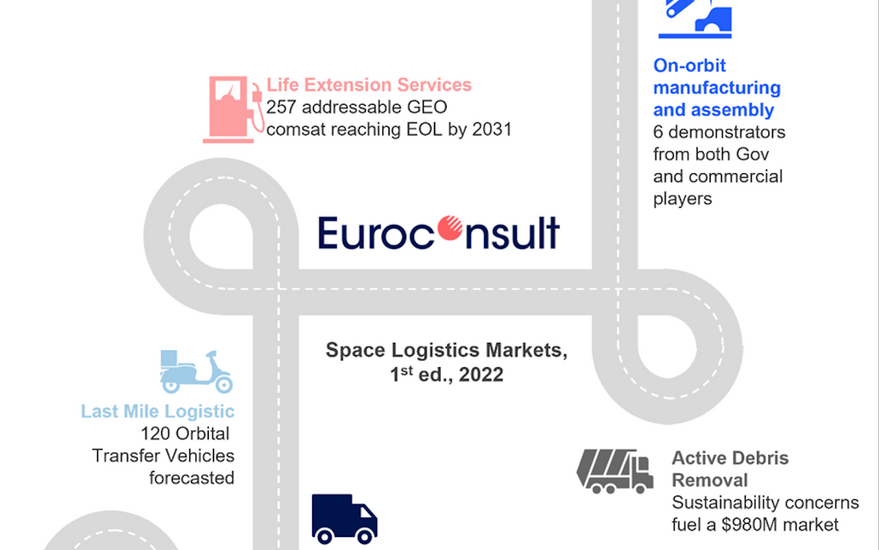SAN FRANCISCO – Euroconsult forecasts 120 orbital transport vehicles to be in operation by 2031, according to the consulting firm’s latest Space Logistics Markets report.
“We anticipate constellations to be the most likely customers, accounting for three-quarters of the demand for satellites in the 200- to 350-kilogram mass range,” said Maxime Puteaux, Euroconsult principal advisor and author of the report released in May.
Euroconsult expects constellation operators to rely on orbital transfer vehicles to move satellites into multiple orbital planes, decreasing the constellation operators’ reliance on dedicated launch vehicles.
“Indeed, most of the small to medium constellations’ demand by orbital planes are either too large for micro or small launchers or too small for medium or heavy ones,” Puteaux said by email.
It remains to be seen how the adoption of onboard propulsion by satellite developers influences the last-mile logistics market. Satellites with powerful onboard propulsion may not need to hitch rides on orbital transfer vehicles.
A widespread perception of unmet demand for moving around small satellites in orbit is attracting companies to the last-mile logistics sector.
Italian firms D-Orbit and Group of Astrodynamics for the Use of Space Systems (GAUSS) as well as U.S. companies Momentus, Northrop Grumman Innovation Systems and Spaceflight Inc. have developed, manufactured, tested or flown orbital transfer vehicles. Seven additional companies are preparing to enter the market with initial flights scheduled in the next three years. The companies are: Atomos, Exotrail, Firefly Aerospace, Launcher, Space Machines, Exolaunch and Impulse Space.
It’s too soon to say how many of these companies will prosper in the last-mile delivery market, which in the future, is not likely to be limited to low-Earth orbit as it is now.
“Operators are eyeing transportation of larger satellites and more distant orbits, such as geostationary or even beyond-Earth orbits for exploration,” Puteaux said.
Vehicles designed to serve larger satellites and distant orbits will require powerful propulsion systems. In addition, reusability through on-orbit refueling will also be “a key enabler,” Puteaux said.
If powerful, reusable orbital transfer vehicles come online, satellite operators may “adapt their satellites’ designs to leverage the service, for instance by installing docking ports for towing or removing part of the propulsion system and fuel to increase payload capacity,” Puteaux said.
Demand for orbital transfer vehicles will also be determined by the emergence of super heavy launch vehicles.
A reduction in launch costs produced by the giant rockets could lower the cost of last-mile service. At the same time, giant rockets could spur demand for orbital transfer vehicles by increasing the number of satellites released in similar orbits from super heavy rideshare missions, Puteaux said.
